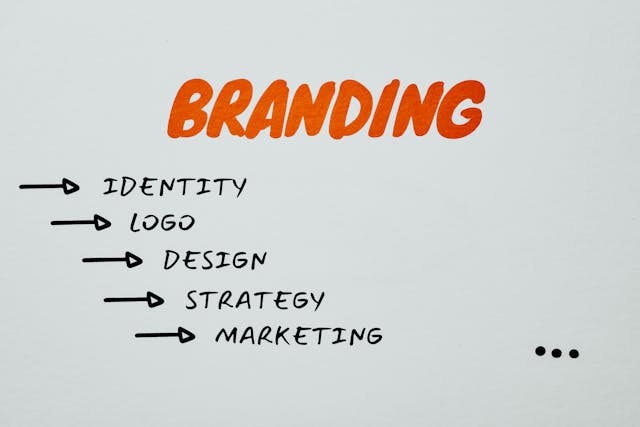Building a strong and memorable brand identity is a great way to differentiate your business in a competitive market. Unlike popular belief, your brand identity goes beyond a logo. It is the essence of how your business communicates, resonates, and connects with its audience.
Whether you’re a startup founder, marketing professional, or small business owner, this comprehensive guide will help you create a brand identity that captivates your audience and drives success. Let's start by understanding exactly what brand identity entails.
What is Brand Identity?
The brand identity is the collective persona of the business. It includes both the visible and invisible elements of your company. This includes your logo, vision, mission, colors, tone of voice, values, culture, and emotions your brand evokes.
Why is this important?
- Builds trust and credibility.
- Differentiates your business from competitors.
- Creates emotional connections with your audience.
- Guides marketing and operational decisions.
Brand Vision and Mission
Your vision defines where you want your brand to go. It should be aspirational, reflecting the long-term impact you aim to make in your industry or community. For example, Tesla’s vision is “to create the most compelling car company of the 21st century by driving the world’s transition to electric vehicles.”
On the other hand, a mission describes how you’ll get to the vision. A great mission statement is specific, actionable, and focused. Google’s mission is “to organize the world's information and make it universally accessible and useful.”
To create impactful vision and mission statements, stick to the core of your business and the problem you are trying to solve. Secondly, keep it short, precise, and aspirational.
Brand Values
The next section of your identity is the core values. These principles define your company’s culture and guide its behavior. They should align with your vision and be authentic.
To craft your company’s value, start by reflecting on the business's purpose. Then, brainstorm with your team and pick 3-5 of the most important values for achieving your vision.
These must be lived values that guide how you do business. If sustainability is a core value, for example, it should be seen in your office management, packaging, and product development.
Brand Voice and Tone
Your brand voice is your startup’s personality expressed in words. It should be aligned with your target audience's preferences and consistent across all communication channels.
To create a tone and use language that resonates with your audience, you must understand their pain points, aspirations, and communication styles. Use language they can relate to, avoiding jargon unless necessary for the context, for example, doctors.
Brand Storytelling
Stories humanize your brand and make it relatable. You want to create a brand story showcasing a problem, how your business solves it, and the journey that inspired you to build this solution.
A good story is Coca-Cola; the brand focuses on refreshing and bringing families together. This can be seen in all their marketing messaging.
This story can be told through social media campaigns, website content, and other marketing materials, such as company videos.
Visual Identity
Your visual identity comprises your logo, color, graphics, and typography.
Your logo is the face of your brand. It should be simple and timeless, reflect your brand’s personality, and be versatile for various applications such as websites and merchandise.
Choose colors that evoke the emotions and ideas you want your brand to convey. For example, blue signifies trust, while red suggests passion. If you check, many tech companies have blue as one of their colors, while dating sites go for red or pink.
Select fonts that complement your brand’s tone. A modern sans-serif font might suit a tech startup, while a handwritten font could work for a creative brand.
An important aspect to add to your visual identity is a brand guide. A style guide ensures consistency in how your brand appears across channels. It should include:
- Logo usage guidelines.
- Approved color codes (HEX, RGB, CMYK).
- Font styles and sizes.
- Image and iconography styles.
Digital Brand Identity
Today, the most important brand identity is digital. Most clients will find you online. Your website and social media profiles are crucial for establishing credibility. Ensure they reflect your brand identity through consistent visuals and messaging.
It is important to ensure you use branded profile pictures and cover images, write bios that convey your mission and values concisely, and include links to your website or key landing pages.
Post valuable, relevant, and engaging content regularly to keep your audience connected to your brand. Use blogs, videos, infographics, and stories to enhance visibility and engagement.
Brand Messaging
Your brand messaging should convey your value proposition and unique selling points. Develop a core message that reflects:
- Who you are (e.g., an innovative health tech startup).
- What you do (e.g., provide wearable health monitoring devices).
- Why it matters (e.g., improving patient outcomes through real-time data).
For example, for a budget-friendly SaaS product: “Empowering small businesses with tools that simplify operations without breaking the bank.”
Brand Guidelines
Once you have all the elements of your brand identity, create a brand style guideline. A brand guidelines document ensures consistency and professionalism.
What to include in a brand guide:
- Logo specifications and examples of correct/incorrect usage.
- Color palettes with exact codes.
- Typography choices and usage rules.
- The tone of voice and language guidelines.
- Photography and imagery style recommendations.
These guides should be used by all employees, marketing professionals, and creatives who work with your brand. Train employees, partners, and stakeholders on adhering to the brand guidelines to maintain a cohesive identity across all touchpoints.
Conclusion
Creating a compelling brand identity is more than a creative exercise; it’s a strategic investment in your startup’s future. By clearly defining your vision, values, voice, and visuals, you can create a brand that resonates with your audience, builds trust, and drives growth.
Start by assessing your current brand presence, refining your messaging, and aligning every aspect of your business with your identity. A strong brand isn’t built overnight, but with consistency and dedication, it can become your company’s most valuable asset.



